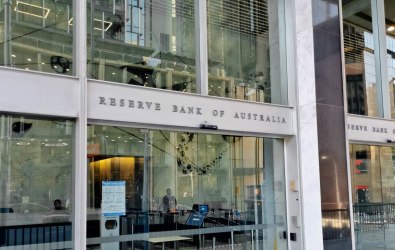As share market bright spots go, this one hardly blazed.
But another lift in average dividends declared in the latest profit-reporting season is an important plank for eventual share market recovery.
It suggests boards are less fearful of market and economic volatility, and narrows the gap between the market's median yield (about 5 per cent) and typical term-deposit rates around 6 per cent.
Morningstar research shows the top 20 stocks produced weighted average dividend growth of 11.1 per cent this latest half year, compared to the same half in 2010.
Investment bank researchers have also reported reasonable dividend growth. Goldman Sachs said average dividends during 2010/11 rose 6.8 per cent, compared to 11.5 per cent a year earlier, and about 70 per cent of companies met or exceeded its dividend forecasts, slightly down over 12 months.
Share buybacks were prominent this reporting season, with more than $8 billion worth announced, including from New Corp, Foster's, Stockland, Crown and Rio Tinto. Share buybacks reduce a company's issued capital, can bolster earnings-per-share growth, and support the share price.
They suggest companies believe their shares are badly undervalued, although the flipside is that buying companies that buy their own shares might achieve a lower return than using funds for acquisitions.
Still, higher dividends and more share buybacks are good news in a profit-reporting reason that broadly met expectations, yet offered little hope for a much stronger share market in the short term. As Investor Weekly reported last week, analyst earnings-forecast upgrades for 2011/12 remain scarce, with downgrades still prominent and a lack of earnings visibility an ongoing problem.
The big issue is whether higher dividends can lure retail investors away from government-guaranteed cash accounts (until October 2011) and rebuild shattered investor confidence, which in Australia has sunk to levels last seen in the first quarter of 2009 as the global financial crisis peaked, a recent survey from researcher CoreData shows.
A 6 per cent return on a term deposit might equate to almost nothing after tax and inflation, but for many investors that is better than the prospects of further share market losses.
Perhaps the best sign is that key sources of share market yield are regaining favour. Telstra Corporation's full-year profit beat market forecasts on several metrics, and it should offer a fully franked dividend yield of 9.2 per cent this financial year, consensus analyst forecasts show. The big banks are on forecast yields near or above 7 per cent, fully franked, and single-digit price-earnings (PE) multiples.
Yields on several larger Australian real estate investment trusts are approaching 7 per cent.
Barring a sharp local economic slowdown, average yields look more sustainable given ASX 200 companies generally have more cash on their balance sheets after collectively raising almost $100 billion in equity capital in 2008 and 2009. Also, the absence of capital growth in many stocks means boards might be more willing to lift total shareholder returns through higher dividends.
At the same time, banks have lowered term-deposit rates recently. Optimists see more income-seeking investors returning to the share market to take advantage of rising yield and ride out the market storm via dividends. Nevertheless, with such poor investor sentiment, and high market volatility, it is hard to see conservative investors moving away from the safety of term deposits any time soon.





